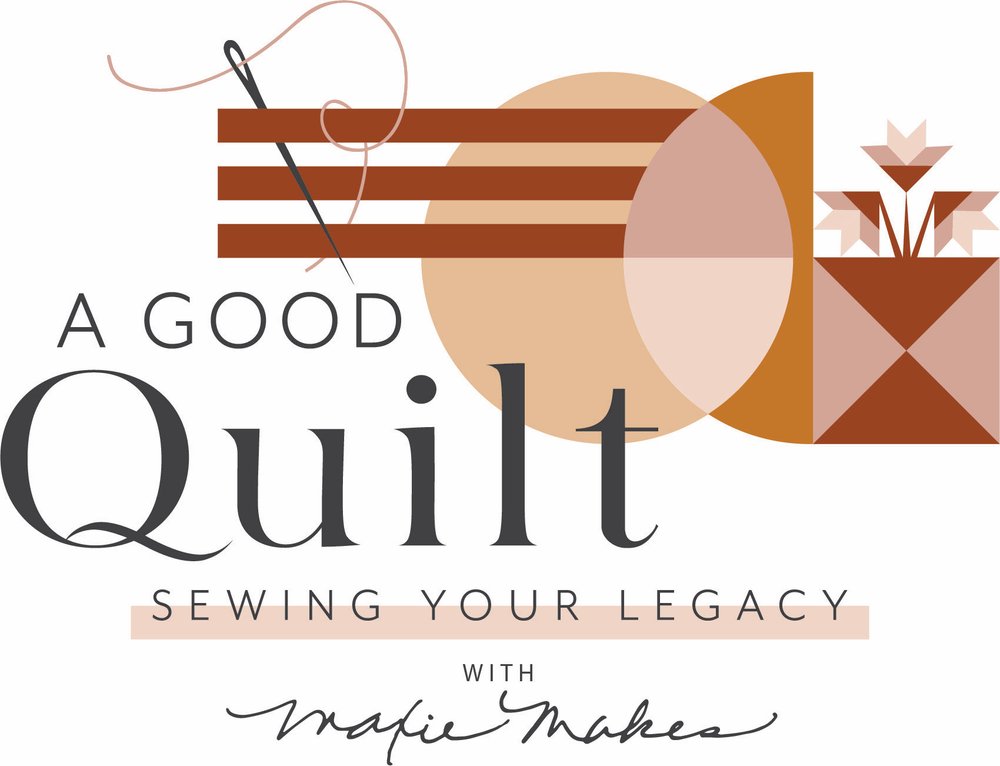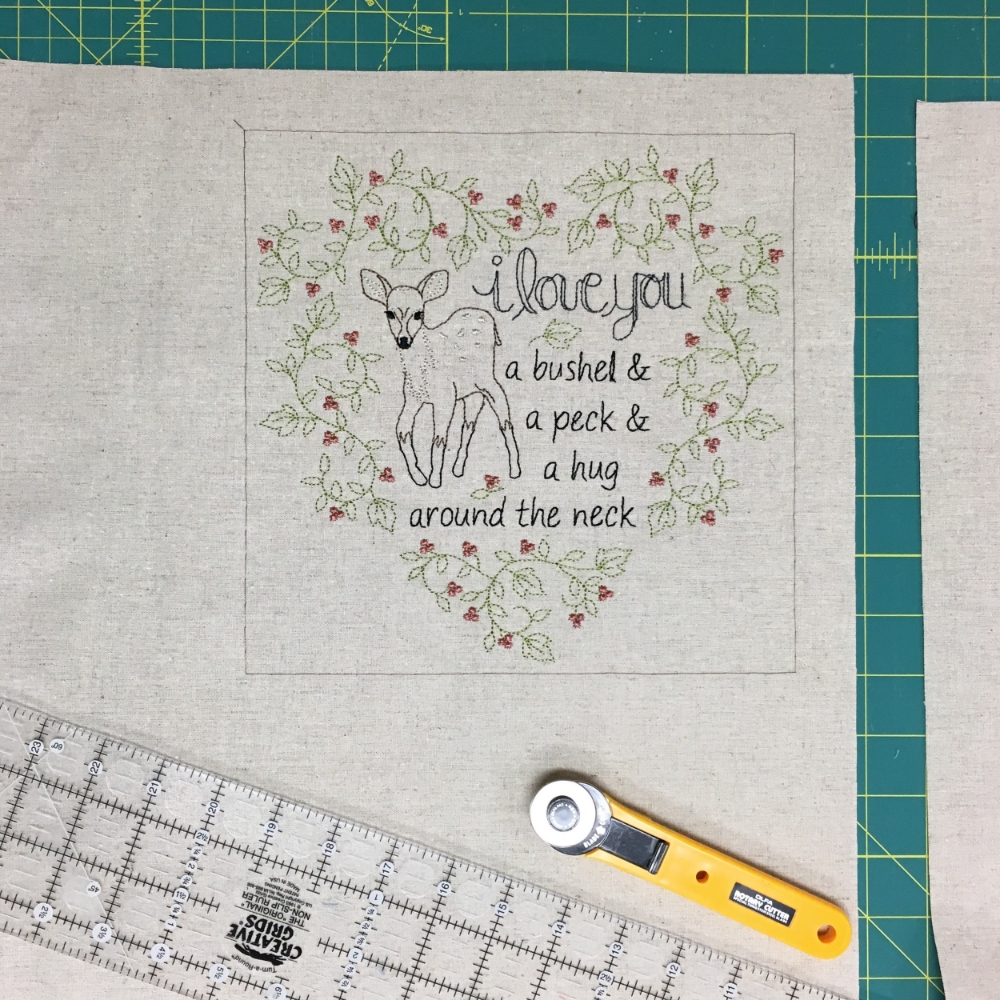I've been a fan of Evy Hawkins' work for a while. You may be familiar with her beautiful Sashiko techniques, or her monograms and embroidery designs, or her machine cutwork (she teaches a Machine Embroidered Cutwork Class on Craftsy). Her website is a wonderland of delicately beautiful needlework, ranging from quilting to hand embroidery. It's packed with projects, tutorials and inspiration, so brew a cup of tea and have a visit with Evy!
When I first saw her Baby Deer embroidery designs I knew I had to make something for my new granddaughter, Ollie Doe! I could hardly wait for the 5 second download to complete. By the way, she offers this for both hand and machine embroiderers.
My Baby Lock Destiny stitched it out perfectly! Tip: My machine has an optional basting feature, which adds a basting stitch around the design, spaced perfectly around four sides. Before removing the stitches, I used them to square up the embroidery piece perfectly! I simply measured 1" off the stitching line and trimmed. See photo below. Ready for the borders!
I added 3" borders of pink check printed linen and piping and it was ready for little Ollie's visit in no time! Thanks, Evy, for your beautiful work!
And thank you for visiting! Happy Sewing and God bless. Maxie









